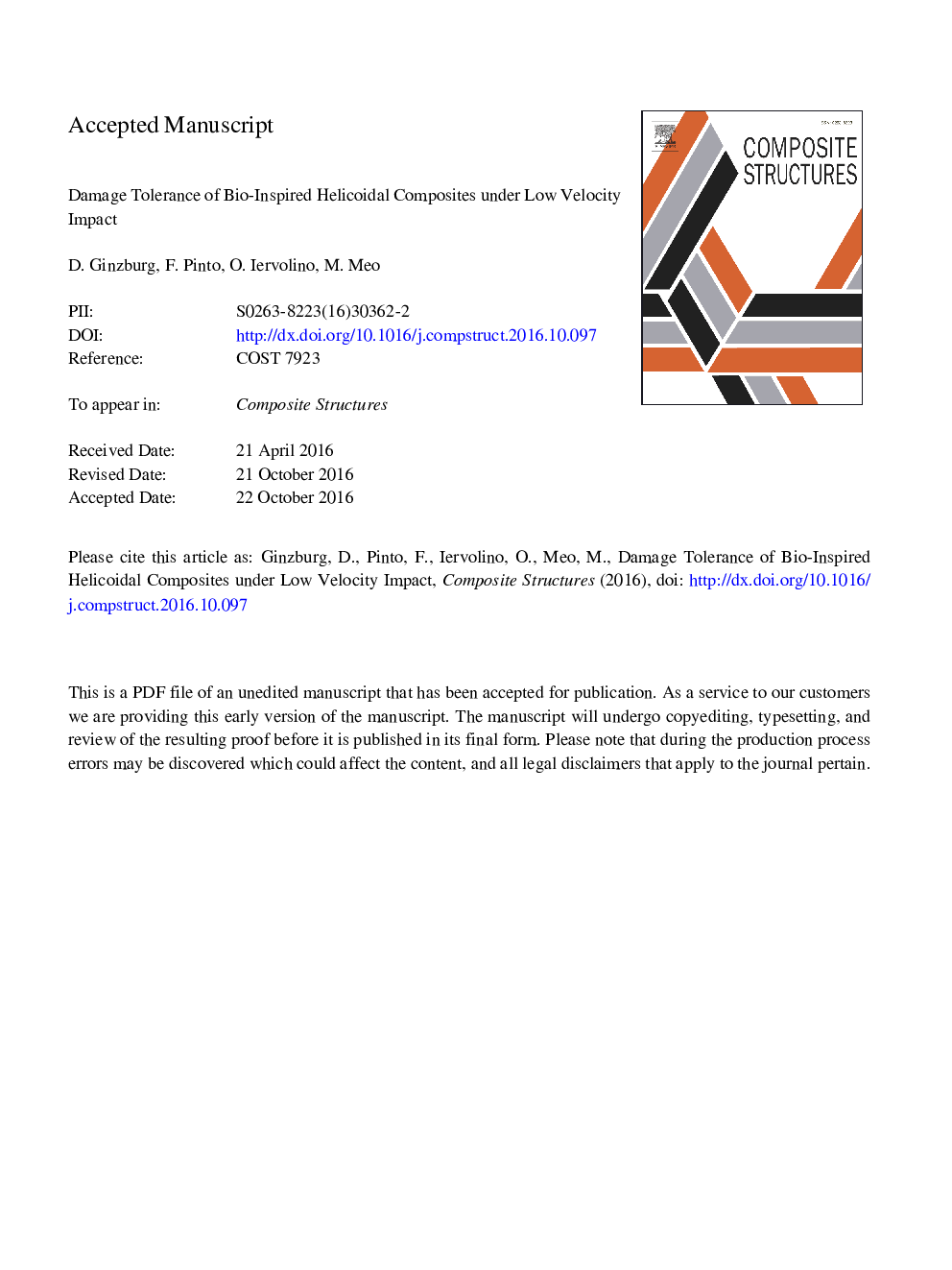| کد مقاله | کد نشریه | سال انتشار | مقاله انگلیسی | نسخه تمام متن |
|---|---|---|---|---|
| 4917845 | 1428546 | 2017 | 32 صفحه PDF | دانلود رایگان |
عنوان انگلیسی مقاله ISI
Damage tolerance of bio-inspired helicoidal composites under low velocity impact
دانلود مقاله + سفارش ترجمه
دانلود مقاله ISI انگلیسی
رایگان برای ایرانیان
موضوعات مرتبط
مهندسی و علوم پایه
سایر رشته های مهندسی
مهندسی عمران و سازه
پیش نمایش صفحه اول مقاله

چکیده انگلیسی
It is well known that laminated composite materials are prone to impact damage caused by foreign objects and exhibit poor damage resistance in through the thickness direction. By drawing inspiration from naturally occurring impact resistant structures, such as dactyl clubs of mantis shrimp, enhanced damage tolerance and impact energy absorption can be achieved with traditional CFRP layers by creatively arranging them into bio-inspired configurations, called helicoidal or Bouligand structures. Through an extensive numerical analyses of low velocity impact (LVI) supported by the experimental results, a further insight into the possibilities that these structures can offer in terms of damage resistance was attained. By comparing the results of three square plates with different planar sizes, it was shown that the helicoidal layups are more effective at absorbing energy while minimising through the thickness failure than standard quasi-isotropic and cross-ply laminates. Although the helicoidal composites generally exhibited a higher degree of delamination in LVI tests, the standard lamination schemes displayed higher degree of perforation, which resulted in a reduced residual strength in the compression after impact (CAI) testing of a quasi-isotropic laminate compared to several helicoidal ones subjected to 40Â J and 80Â J impact energy. Furthermore, using advanced finite element analysis (FEA) code LS-DYNA® for simulating LVI and CAI events, it was revealed that the helicoidal arrangement endured the least amount of fibre damage.
ناشر
Database: Elsevier - ScienceDirect (ساینس دایرکت)
Journal: Composite Structures - Volume 161, 1 February 2017, Pages 187-203
Journal: Composite Structures - Volume 161, 1 February 2017, Pages 187-203
نویسندگان
D. Ginzburg, F. Pinto, O. Iervolino, M. Meo,